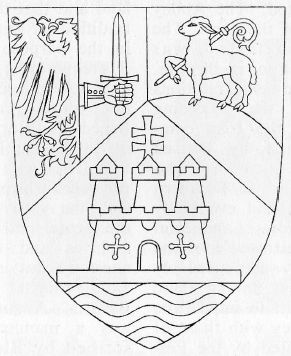Fort Augustus Abbey: Difference between revisions
Knorrepoes (talk | contribs) m (Text replacement - "{{religion}}" to "") |
Knorrepoes (talk | contribs) m (Text replacement - "{{rel}}" to "{{religion}}") |
||
| Line 24: | Line 24: | ||
The significance of the arms assigned to Fort Augustus is obvious; a fort, or castle, rising above the waters of the Loch, surmounted by the patriarchal cross of Saint Benedict, transformed now into a spiritual fortress. This significance is emphasised by the motto of the Abbey: 'PAX IN VIRTUTE'." | The significance of the arms assigned to Fort Augustus is obvious; a fort, or castle, rising above the waters of the Loch, surmounted by the patriarchal cross of Saint Benedict, transformed now into a spiritual fortress. This significance is emphasised by the motto of the Abbey: 'PAX IN VIRTUTE'." | ||
{{ | {{religion}} | ||
{{media1}} | {{media1}} | ||
Revision as of 10:14, 25 July 2023
FORT AUGUSTUS ABBEY
Country : United Kingdom
Denomination : Roman Catholic / Benedictan
Established : 1875, abolished 1998
Official blazon
Tierced in pairle reversed; first, per pale dexter Or, a double-headed eagle displayed dimidiated Sable, sinister Gules, a sinister hand clothed in armour holding a sword pale- ways all proper (for the Abbey of Saint James, Regensburg), second, Azure, on a mount vert a lamb passant holding a crozier all proper (for the Abbey of Saints Adrian and Denis, Lamspringe ), third, Azure, a castle triple-towered Argent, with a patriarchal cross patee surmounting the central tower or, standing on a terrace vert, with the sea in base under Azure and Argent (for the Abbey of Saint Benedict, at Fort Augustus)
Origin/meaning
The arms were officially granted on December 17, 1958.
Fort Augustus Abbey as representative of the continental abbeys of Regensburg and Lamspringe has been allowed to incorporate in its shield of arms the coats of these two venerable monastic foundations. T
The Priory of Saint Benedict, since raised to the status of an abbey, was founded at Fort Augustus in 1875, with the permission of the General Chapter of the English Congregation, meeting at Saint Osburg's, Coventry. The purpose of the foundation is indicated by a statement made by the first Prior, Dom Jerome Vaughan: "the old English monastery of Lambspring and the Scotch College at Regensburg , will be restored and the old line of Monks perpetuated. The Abbey of Saint James of the Scots, The famous 'Scottenkloster', was founded at Regensburg, in Bavaria, in 1110, but its monastic traditions reach back to the preceding century and to the Irish community established by Blessed Marianus Scotus (died 1088) who came from Ireland to Southern Bavaria in 1067, and eventually settled at Regensburg. Lands and privileges were bestowed upon the Schottenkloster by successive Holy Roman Emperors, among these privileges the right to impale the arms of the Abbey with those of the Empire, granted by the Emperor Henry VII (1308-13). In the nineteenth century the post Napoleonic liberal governments of Germany set about suppressing the monasteries, and Ratisbon's history of eight centuries came to an end. The Abbey was not suppressed out of hand but the community was forbidden to receive new recruits. By 1862 the community had been reduced to two monks. One of these retired to a monastery in Austria, the other, Dom Anselm Robertson, returned to his native Scotland determined to perpetuate there the traditions of the Schottenkloster by founding a monastery that would be its legal successor.
An opportunity presented itself when he learned that the English Benedictine Congregation was prepared to make a new foundation to insure the survival of the Lambspring community. his community had been settled in Hannover since 1644. Dom Anselm requested that the new foundation be made in Scotland and that the survival of the traditions of Regensburg be included in the purpose of its founding. His request was granted and it was he who received the vows of the first monk professed at Saint Benedict's Priory, Fort Augustus, in 1878.
The significance of the arms assigned to Fort Augustus is obvious; a fort, or castle, rising above the waters of the Loch, surmounted by the patriarchal cross of Saint Benedict, transformed now into a spiritual fortress. This significance is emphasised by the motto of the Abbey: 'PAX IN VIRTUTE'."
Religious or Ecclesiastical heraldry portal
This page is part of the Ecclesiastical heraldry portal |
Heraldry of the World |
|
Catholic heraldry
|
Other Christian churches Other religions
|
Literature : Baynes, 1961.


